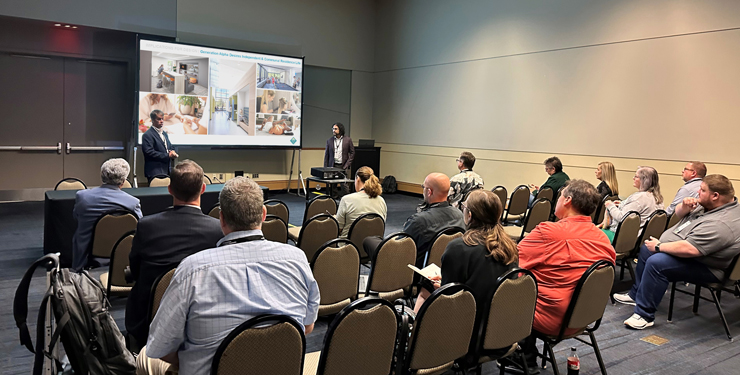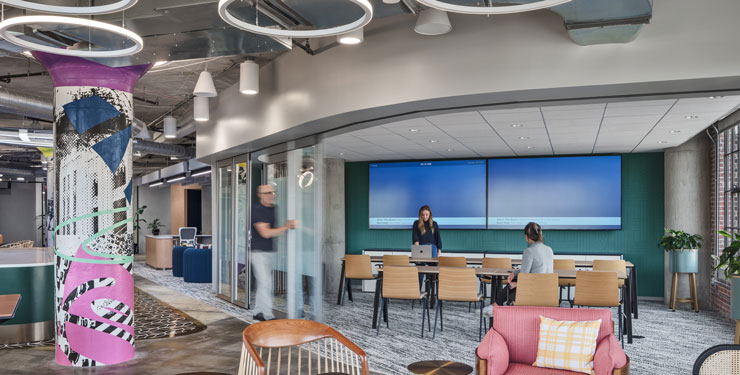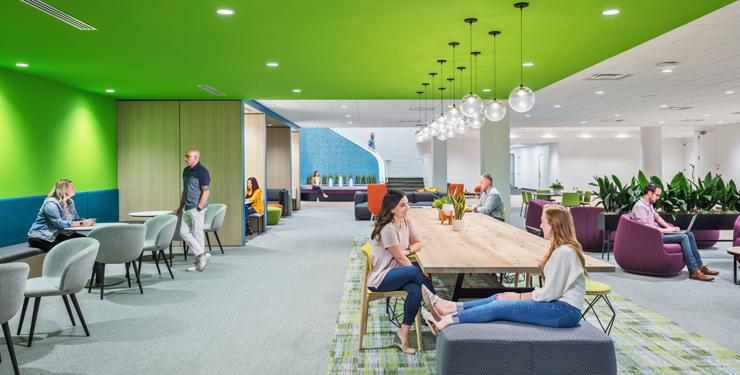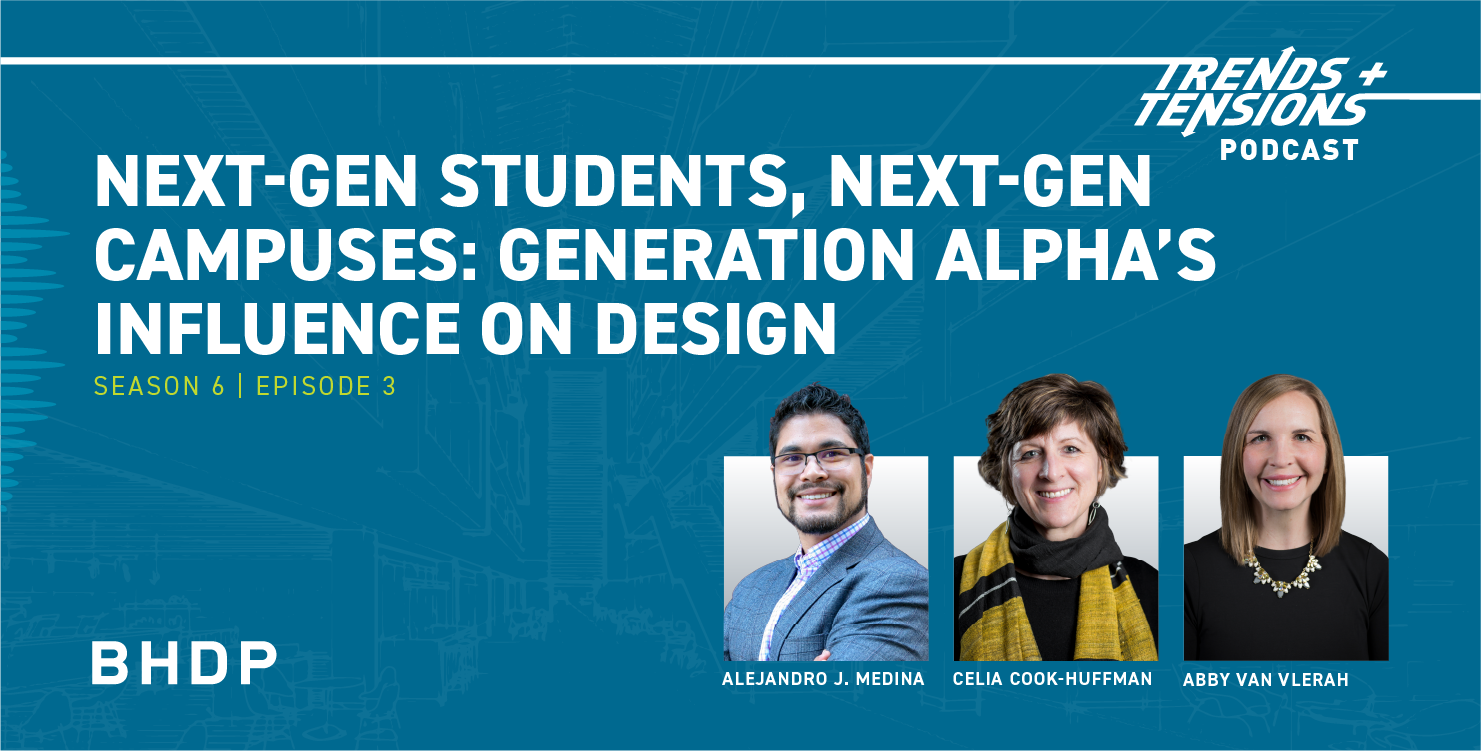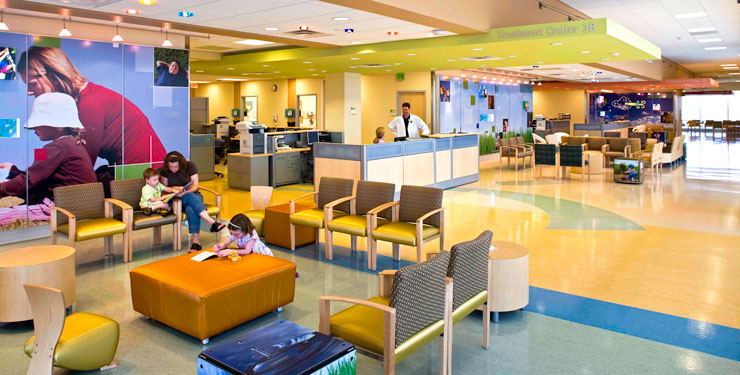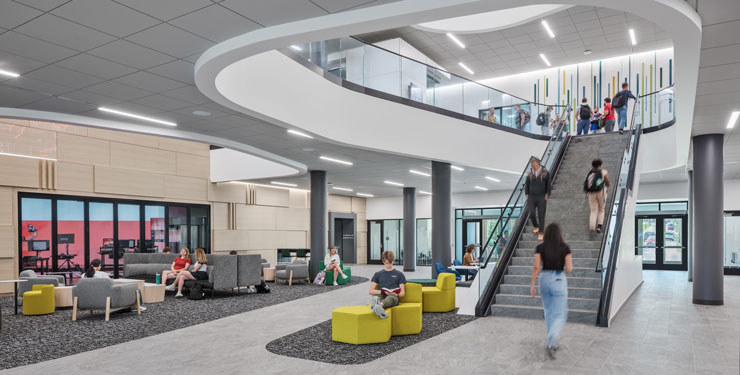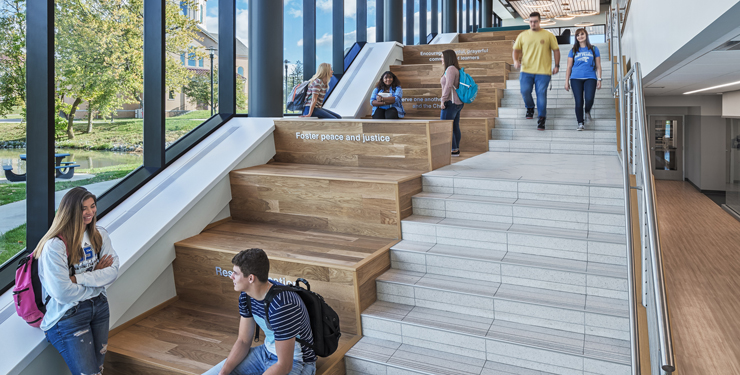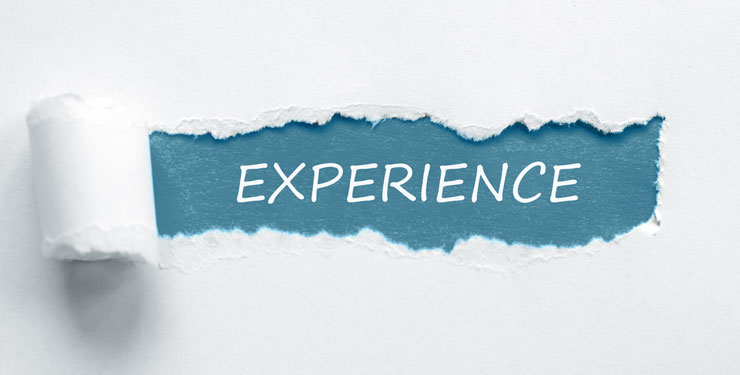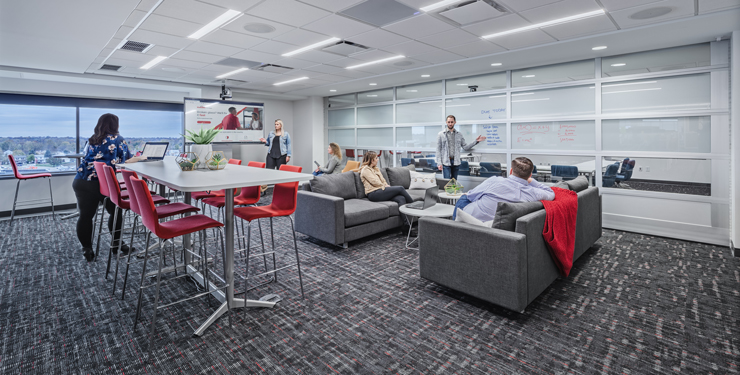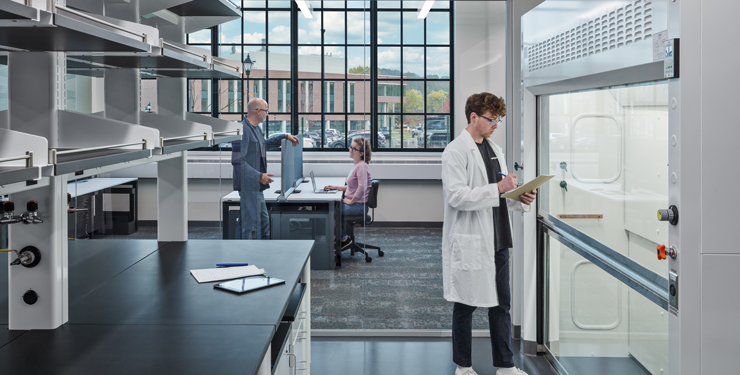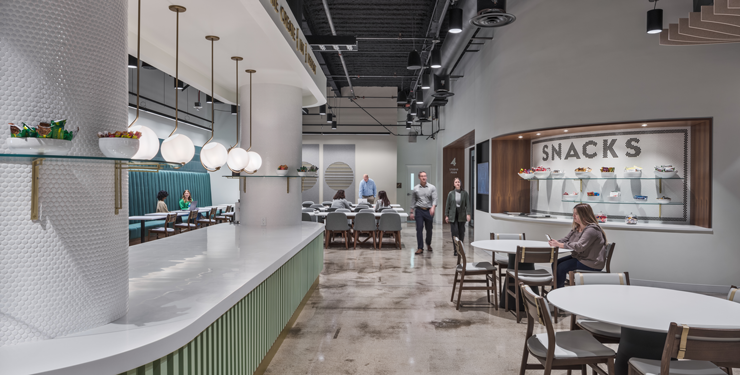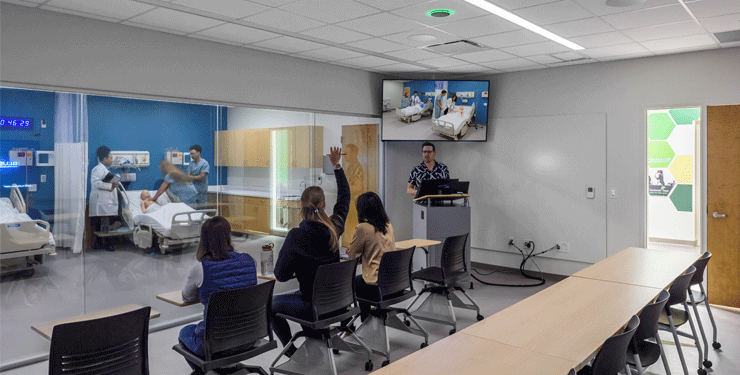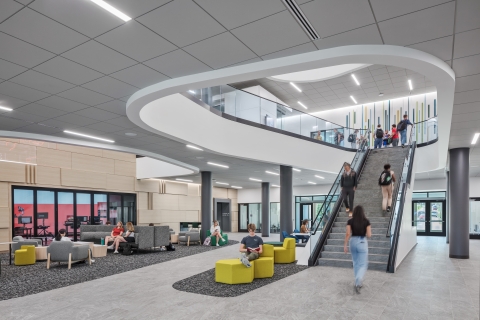
Let's Talk Research
Uncovering The Art and Science of Design for People
At BHDP, applied research is a means—not an end—that empowers our design process to be informed, empathetic, and exciting. Asking the right questions, aligning methods, and leveraging analytics produce the critical insights to create transformational outcomes with our clients and their people. Design for people demands a deep and holistic understanding of people, experience, and behavior, which we embrace by celebrating the complex, sociocultural variables linked to how people work, learn, innovate, and heal.
Human-centered design research creates new knowledge and solutions to improve the design of buildings and spaces. It applies existing theories to solve specific challenges and meet particular needs, often involving interdisciplinary collaboration across business intelligence, environmental science, sociology, and psychology.
Applied research thus bridges the gap between theory and practice, providing the necessary groundwork for innovations that directly influence the design of places where people live, work, and grow.
Applied Research in Action
BHDP leverages applied research methods to solve real-world design challenges, using data, human behavior insights, and predictive tools to inform decision-making and deliver better outcomes. Here are a few ways we apply our design research expertise across markets:
Post-Occupancy Evaluations: Measuring Design’s Long-Term Impact
Design doesn’t end when construction does. Our post-occupancy evaluations—an essential part of our human-centered design research practice—help organizations understand how spaces perform over time, through space utilization studies, employee feedback, and direct observation. For example, a Fortune 500 company engaged BHDP to assess its redesigned headquarters, aiming to boost innovation and collaboration. By identifying underutilized zones and evaluating employee engagement levels, we delivered insights that not only validated design decisions but also guided future workplace strategy—ultimately helping leadership justify their investment and plan with confidence.
User Experience Research: Understanding People
To create truly effective environments, we study how people experience their surroundings in real time. For a large healthcare system, BHDP conducted ethnographic research, shadowing doctors and nurses to uncover inefficiencies contributing to provider burnout. The findings informed design strategies that reduced workflow friction, improved staff satisfaction, and enhanced retention. Our human-centered approach enables us to develop spaces that are not only operationally efficient but also emotionally and physically supportive.
Predictive Analytics: Future-Proofing Our Designs
Designing spaces that remain relevant over time requires more than intuition—it demands foresight. BHDP uses predictive analytics to help clients across all markets make smarter, future-focused decisions. By analyzing trends in behavior, space utilization, demographics, and operational needs, we uncover patterns that inform adaptable, forward-looking design strategies. For instance, when a university sought to invest in new academic buildings, BHDP leveraged predictive analytics to analyze enrollment trends, space utilization, and student behavior, helping leadership make data-driven decisions. The insights informed a flexible design strategy that supports long-term growth and institutional resilience.
Space Optimization: Maximizing Real Estate
Across industries, organizations are rethinking how much space they need and how effectively it supports their goals. BHDP helps clients make informed, data-driven decisions by analyzing how spaces are actually used—leveraging tools like occupancy sensors, surveys, and behavioral analysis. In one case, a global financial services firm partnered with us to assess facility usage across its portfolio. Our research revealed underutilized areas and opportunities to reconfigure space, resulting in greater efficiency, reduced operational costs, and environments better aligned with evolving user needs. Whether it’s a classroom, lab, office, or clinical space, we help clients right-size their footprint while enhancing performance.
Behavior Mapping: Enhancing Efficiency in Environments
In complex environments, inefficient movement and workflows can hinder performance and increase stress. BHDP uses behavior mapping to track how people interact with space—analyzing movement patterns and spatial relationships to uncover inefficiencies. At a university hospital, we studied staff movement and medication flow within a central pharmacy, revealing bottlenecks that led to targeted layout changes and faster turnaround times. Whether in a lab, classroom, office, or clinical setting, behavior mapping helps streamline operations and enhance overall performance.
Our Insights

